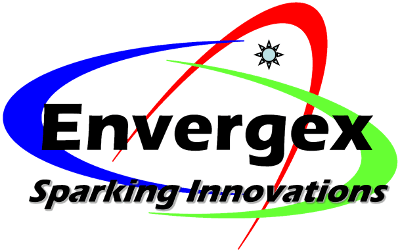Licensable Technology
Patents
We welcome interest from partners in using our novel technologies. We have patents in the following subject areas.
Method of manufacturing carbon-rich product and co-products
Abstract:
A method in which a parent hydrocarbon-rich material is processed so as to produce both a carbon-rich solid material that has a higher carbon to hydrogen ratio than that of the parent material and a carbon-deficient combustible gas that has a lower carbon to hydrogen ratio than the parent material. In the process, the material is activated by exposing it to a hot gas stream having elevated levels of one or both of carbon dioxide and water vapor. The combustible gas is combusted to produce heat. At least about 80% of the heat is used in one or more endothermic steps that include drying coal or biomass.
Capture of carbon dioxide by hybrid sorption
A composition, process and system for capturing carbon dioxide from a combustion gas stream. The composition has a particulate porous support medium that has a high volume of pores, an alkaline component distributed within the pores and on the surface of the support medium, and water adsorbed on the alkaline component, wherein the proportion of water in the composition is between about 5% and about 35% by weight of the composition. The process and system contemplates contacting the sorbent and the flowing gas stream together at a temperature and for a time such that some water remains adsorbed in the alkaline component when the contact of the sorbent with the flowing gas ceases.
Method for capturing mercury from flue gas
Abstract:
The present invention relates to use of carbon-based sorbents such as activated carbon for controlling vapor phase mercury emissions in coal-fired power plant flue gases or waste incineration flue gases. The invention features new methods that improve the performance of carbonaceous sorbents for mercury control compared to the previous methods. One method consists of injecting the sorbent (consisting of at least some carbonaceous material) into the flue gas where the flue gas temperature is at a value above about 1100° F. and below about 2000° F. The invention also consists of injecting the sorbent within or upstream of an economizer section in a coal-fired power boiler. Injecting the sorbent at the locations indicated above, rather than further downstream, provides increased residence time for contact between the flue gas and the sorbent resulting in increased mercury capture, improved sorbent utilization, and improved fly ash properties.
Flue gas mercury control
Abstract:
Adsorbent composition for removing mercury from a flue gas stream, and a method of its use. The composition is a powdered activated carbon having at least one of a halogen-containing component and an alkaline component dispersed thereon. A flow agent can be composited with the material to maintain flowability in situ.
System and method for coproduction of activated carbon and steam/electricity
Abstract:
A system and method for producing activated carbon comprising carbonizing a solid carbonaceous material in a carbonization zone of an activated carbon production apparatus (ACPA) to yield a carbonized product and carbonization product gases, the carbonization zone comprising carbonaceous material inlet, char outlet and carbonization gas outlet; activating the carbonized product via activation with steam in an activation zone of the ACPA to yield activated carbon and activation product gases, the activation zone comprising activated carbon outlet, activation gas outlet, and activation steam inlet; and utilizing process gas comprising at least a portion of the carbonization product gases or a combustion product thereof; at least a portion of the activation product gases or a combustion product thereof; or a combination thereof in a solid fuel boiler system that burns a solid fuel boiler feed with air to produce boiler-produced steam and flue gas, the boiler upstream of an air heater within a steam/electricity generation plant, said boiler comprising a combustion zone, a boiler-produced steam outlet and at least one flue gas outlet.
Process for treating metal-contaminated materials
Abstract:
A process for treating wastes contaminated by toxic metals and/or organic materials is disclosed. The process involves heating the metal-contaminated wastes to a temperature sufficient to volatilize the metals. This temperature is also high enough to destroy or volatilize organic contaminants. The metal vapors are contacted with a sorbent which is reactive with the metals and sequesters them, thereby forming a non-leachable complex which can be disposed as non-hazardous conventional waste.
